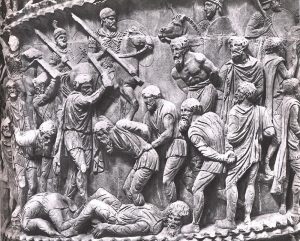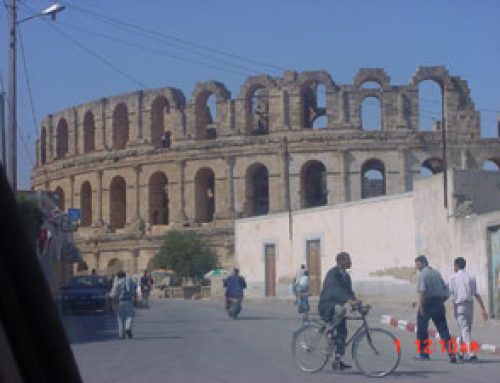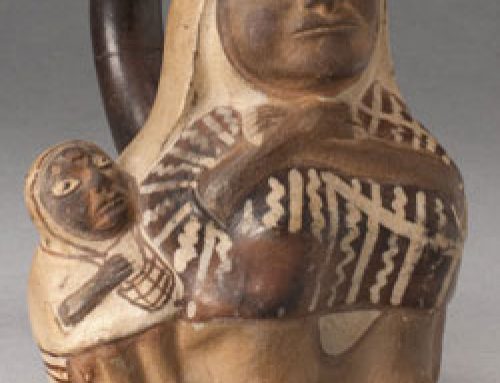
Testudo formation on the Column of Trajan, Rome
What did the Roman army do?
The Roman army fought many wars over the long history of the Roman Empire. For hundreds of years they won pretty much all of their wars. In the early days of the Roman Republic, they beat the Etruscans. Then they beat the Greek city-states in southern Italy.
More about the Etruscans
The Punic Wars
All our ancient Rome articles
By 275 BC the Roman army was fighting the First Punic War against Carthage, and then in 215 BC the Second Punic War. Again, the Romans won both wars.
In the 100s BC, the Roman army fought in Greece and West Asia. By the time of Augustus the Roman army had conquered Gaul (modern France), Greece, the whole Mediterranean coast of West Asia including Israel, and the whole coast of North Africa including Egypt. Augustus’ step-grandson Claudius conquered Britain (England) about 50 AD.
How did the Romans win wars?
Roman soldiers learned how to do a lot of complicated movements so that they could fight better. One of the most famous was the testudo or “turtle”. All the soldiers used their shields to make a sort of shell all around the unit, as you can see in this carving from the Column of Trajan in Rome.

Column of Marcus Aurelius: Roman soldiers cut off the heads of Dacian prisoners.
By the 100s AD, Roman leaders were using swords made of crucible steel imported from India.
History of steel
Ordinary soldiers were probably still using cheaper iron swords. Trajan conquered Dacia (modern Romania) and large parts of Syria and Iraq about this time.
Roman army and revolts
But that was pretty much the end of Roman expansion. The Roman army spent more and more time putting down revolts like the First Jewish Revolt and the Second Jewish Revolt.
The First Jewish Revolt
The Second Jewish Revolt
To prevent invasions and revolts, the legions spent more and more time in one place. They had to stay on or near the borders to keep the empire safe. As they settled down, they began to put down roots. The soldiers married local women, inherited farms, and learned to speak the local language.

Ostrogothic helmet imitating Roman helmets (ca. 400 AD)
Romans fight the Sassanians
In the early 200s AD, the Roman army’s situation took a turn for the worse. The Sassanians in Iran and Iraq attacked the Roman army along the West Asian border. They hoped to push the Romans out of West Asia entirely.
Romans fight the Goths
Seeing that the Roman army was busy in West Asia, a lot of other people living in northern and eastern Europe, like the Visigoths and the Ostrogoths, began to attack Rome from the other side. They often coordinated their attacks with the Sassanians so they would both attack at the same time. It was hard to fight two enemies at the same time. It was very expensive.
What happened to the Roman army?
By the 400s AD, the Roman emperors in the western part of the Empire didn’t really have enough money to pay the soldiers anymore. A lot of the soldiers found other ways to support themselves – farming, or fighting for other armies. The Roman army gradually faded away, and the Visigoths and Ostrogoths moved in.



